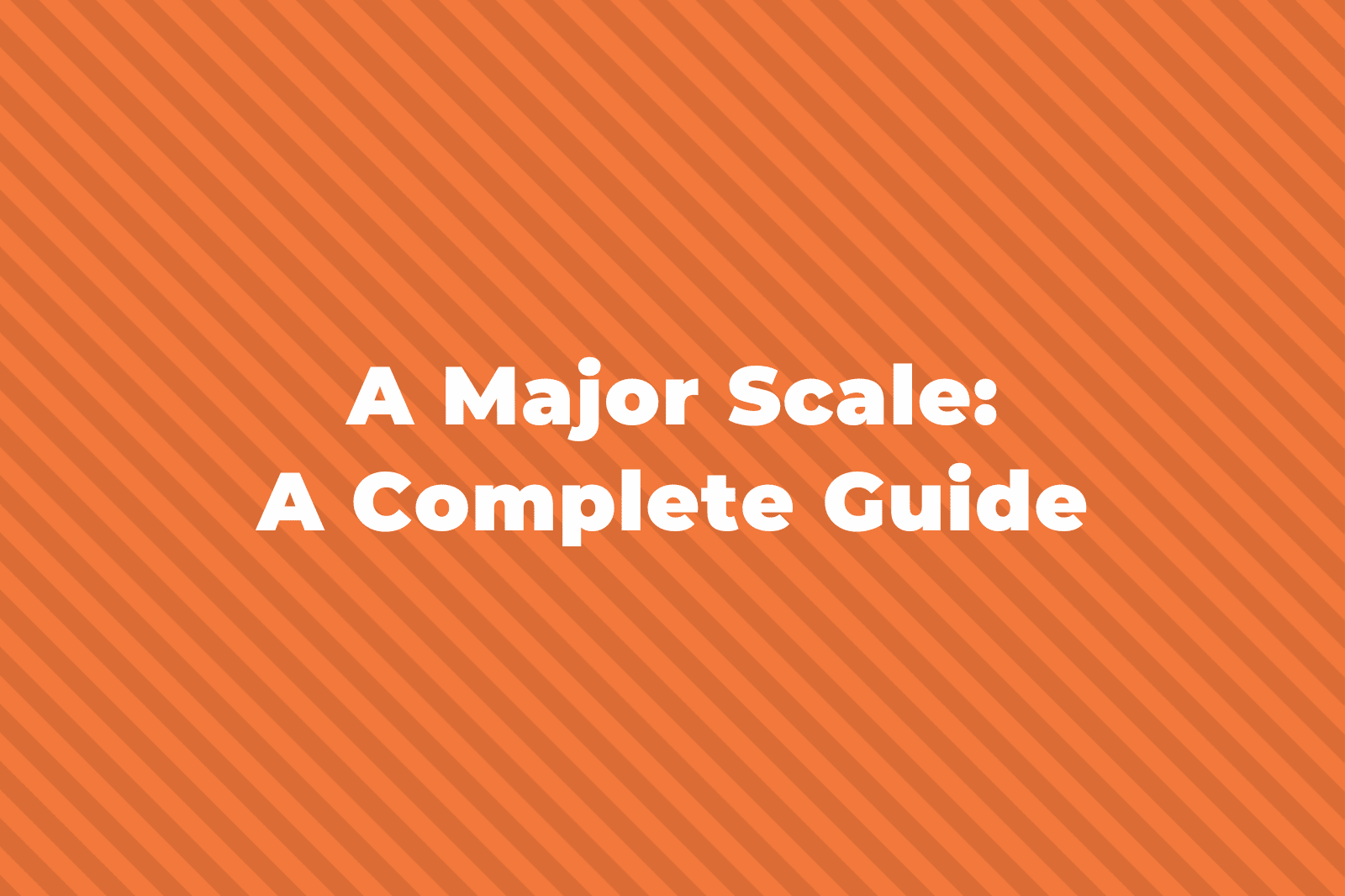As you hopefully know, an interval is the distance in pitch between any two musical notes.
We describe the name of the interval: seconds, thirds, fourths, fifths, etc, and the interval’s quality: major, minor, perfect, augmented, or diminished.
In this post, we’re going to look at what happens when we invert an interval and why that might be useful when working out what intervals are.
How To Invert An Interval?
To invert any interval, all you need to do is take the lower note and put it above the upper note.
For example, if we had a major third with C and E as shown below, we invert this interval by moving the C an octave higher so it’s above the E.

Another example would be this perfect fifth between G and D. If we move the G an octave higher so it’s above the D, we’ve just inverted the interval.

Inverting Perfect Intervals
Perfect intervals (fourths and fifths) have a special relationship as well. Whenever you invert a perfect interval, it becomes the opposite perfect interval.
For example, if you were to invert a perfect fourth, it would become a perfect fifth. It is the same vice versa: when you invert a perfect fifth, it becomes a perfect fourth.

Perfect intervals always stay perfect, unlike the next two types of intervals.
Inverting Major And Minor Intervals
Unlike perfect intervals, which always stay perfect, major intervals when inverted become minor, and minor intervals when inverted become major.
For example, a major sixth when inverted becomes a minor third.

Inverting Augmented and Diminished Intervals
Augmented and diminished intervals work in a similar way to major and minor intervals.
When augmented intervals are inverted, they become diminished, and vice versa: diminished intervals when inverted become augmented.
For example, a diminished fifth when inverted becomes an augmented fourth, and vice versa.

Inverted Intervals Always Add Up To 9
An interesting thing about inverted intervals is that when both are added together, they always add up to 9.
For example, a major third when inverted becomes a minor sixth: 3 – 6 = 9.

Or a minor second when inverted becomes a major seventh: 2 + 7 = 9

What’s The Point Of Inverting Intervals?
When I first learned about inverting intervals, I was skeptical as to whether it would be useful or not, but it can come in handy when working out difficult intervals.
For example, let’s say you had to describe the interval E# – C.
I don’t know about you, but I’m certainly not too familiar with the E# major scale, so this will be quite a hard interval to work out.

But if we invert it, C becomes the bottom note, and I know the C major scale very well. I can straight away see that it’s an augmented third:

As we covered earlier when augmented intervals are inverted, they become diminished intervals. Now I know it’s going to be some kind of diminished interval.
I also know that all inverted intervals add up to 9. So I can ask: 3 + what = 9? It’s, of course, 6, which means that the original interval is going to be a diminished sixth.
Interval Inversion Chart
For reference, here is a chart of all the intervals when they’re inverted:
| Interval | Inverted Interval |
| Diminished 2nd | Augmented 7th |
| Minor 2nd | Major 7th |
| Major 2nd | Minor 7th |
| Augmented 2nd | Diminished 7th |
| Diminished 3rd | Augmented 6th |
| Minor 3rd | Major 6th |
| Major 3rd | Minor 6th |
| Augmented 3rd | Diminished 6th |
| Diminished 4th | Augmented 5th |
| Perfect 4th | Perfect 5th |
| Augmented 4th | Diminished 5th |
| Diminished 5th | Augmented 4th |
| Perfect 5th | Perfect 4th |
| Augmented 5th | Diminished 4th |
| Diminished 6th | Augmented 3rd |
| Minor 6th | Major 3rd |
| Major 6th | Minor 3rd |
| Augmented 6th | Diminished 3rd |
| Diminished 7th | Augmented 2nd |
| Minor 7th | Major 2nd |
| Major 7th | Minor 2nd |
| Augmented 7th | Diminished 2nd |
Conclusion
I hope that makes a bit more sense of inverted intervals and what they can be used for. Just remember:
- Perfect intervals when inverted stay perfect
- Major intervals when inverted become minor
- Minor intervals when inverted become major
- Diminished intervals when inverted become augmented
- Augmented intervals when inverted become diminished
- All pairs of inverted intervals add up to 9



